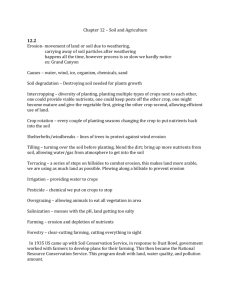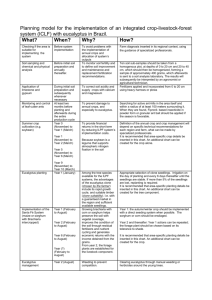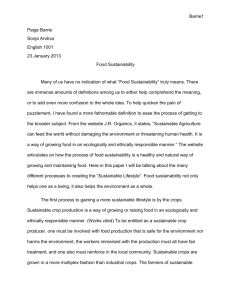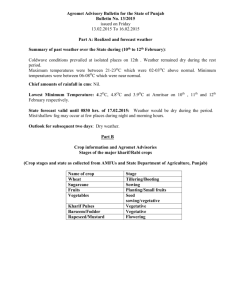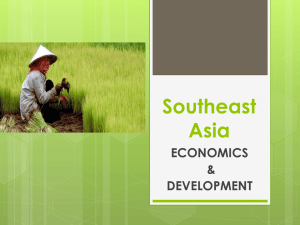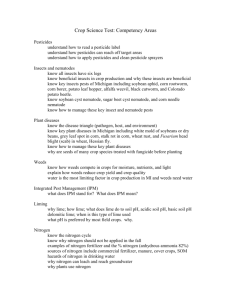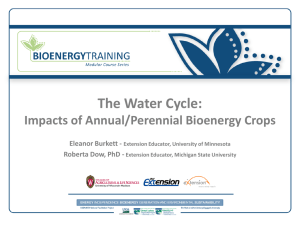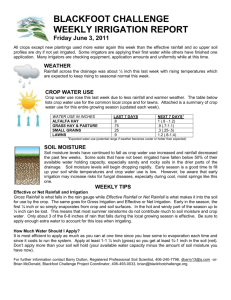Cover Crop Economics - University of Missouri Extension
advertisement
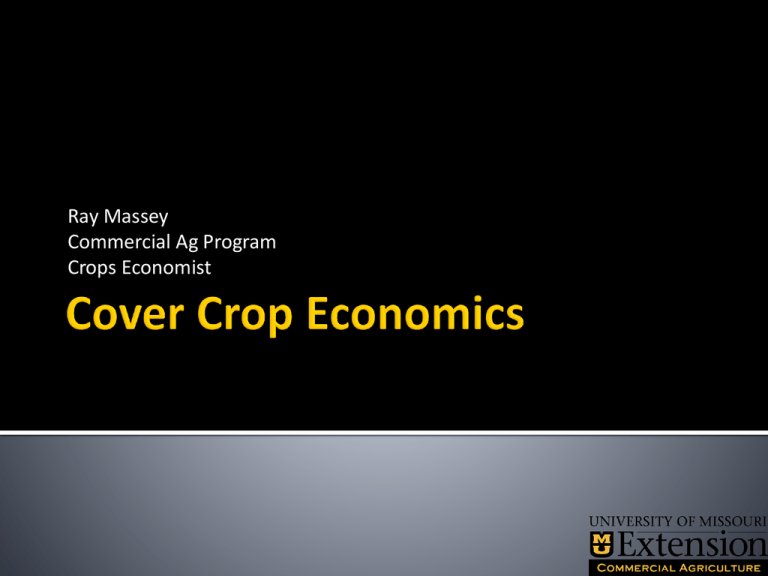
Ray Massey Commercial Ag Program Crops Economist I cannot give an answer of whether or not growing cover crops are a good economic decision! What I can give Discussion of valuation of benefits Discussion of costs to consider A few interesting anecdotes on growing cover crops. reduce soil erosion, increase water infiltration, decrease water runoff, conserve soil water, increase soil organic matter, reduce soil compaction, reduce nitrate leaching, supply nitrogen to subsequent crops, suppress weeds, attract beneficial insects, and other functions How much does a ton of soil not eroded contribute to my net income? How much does an acre-inch of rainwater saved contribute to my net income? How much does 1000 lady bugs attracted to my field contribute to my net income? How much does a pound of nitrogen supplied to subsequent crops contribute to my net income? Nitrogen saved or fixed from a cover crop that reduces my fertilizer bill on the next crop. Any harvestable material such as silage or grazing. Process: quantify the benefit and multiply it times the market price of the item. Soil not lost eventually prevents my ground from losing crop productivity. Increased water infiltration helps me in most years – maybe not 2009. Increased organic matter may improve crop yields or lower input costs. Process – No market prices exist to use incorporate risk analysis and discount future contributions to today Attract beneficial insects that I later kill with my insecticide. Reduce nitrate leaching (considering leaching for leaching sake as opposed to saving N for subsequent crop) Process: ignore or seek an incentive that makes the benefit worthwhile. An internal benefit is something that benefits the person making the decision. Reducing soil erosion is good because it makes my land more productive and valuable. An external benefit is something that does not directly benefit the decision maker. Reducing soil erosion is good because it improves fish habitat and reduces municipal water treatment costs. Negative Externality – when the decision maker imposes a cost on someone else Positive Externality – when a decision maker bestows a benefit on someone else. External benefits (reducing soil erosion) are considered negative externalities by society (pollute the stream with soil). Regulation – force the decision maker to manage in such a way that the cost is not imposed on society. Subsidy – incentivize the decision maker so that he voluntarily chooses to manage in such a way that the cost is not imposed on society. Practice 340: Cover Crop USDA specifies what cover crops to plant The cover crop plant planting window The cover crop growing period Incentive: $38/acre Seed - Rye Grass: 9 lb/ac * $79/cwt = Planting cost = Subtotal Burndown (needed anyway) = Burndown (cover crop specific) = $7.11/ac $13.00/ac $20.11/ac $0.00 $15.00 The $38/acre EQIP subsidy may completely pay for the cover crop Definite costs: Seed purchase Planting expense Possible costs Fertilizer? Herbicide burn down or disking? Delays in planting due to cover crop? Other? Tim Harrigan Michigan State University Slurry No-till Oil seed radish Tim Harrigan Michigan State University Slurry No-till Annual rye grass Tim Harrigan Michigan State University Cover Manure Application? Sidedress Crop? #N/acre Nitrogen #N/acre No No 151 Yes No 151 Yes 112 90 Corn yield bushels/acre 160 153 169 No Yes 224 224 90 90 183 176 Yes 336 90 173 Source: J.W. Singer, J.L. Kovar, C.A. Cambardella, M.D. Tomer and T.B. Moorman. USDA National Soil Tilth Lab. Ray Massey Commercial Ag Program Crops Economist
